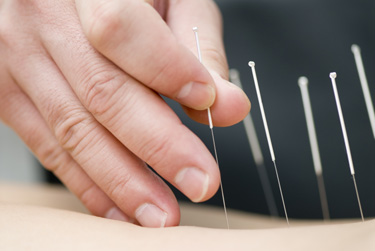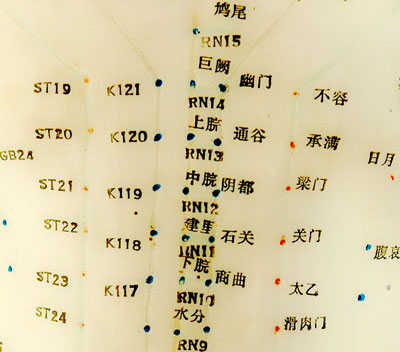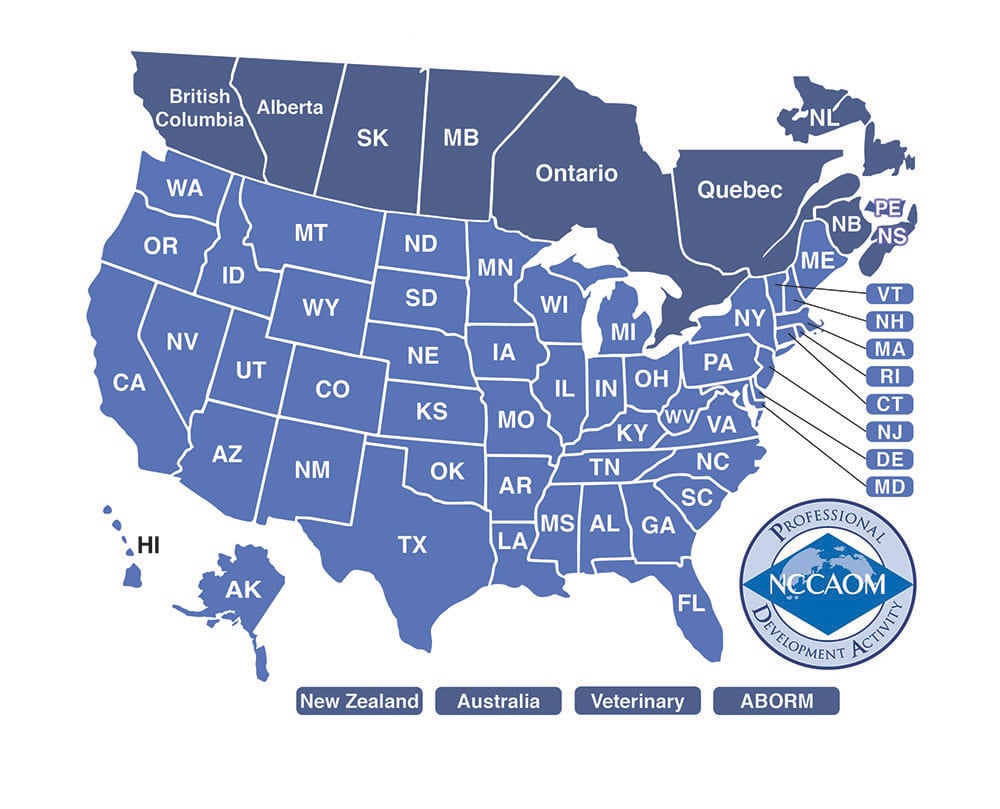Safety In Acupuncture #2
Sample of Course Materials

View Samples From The Course Materials:
Moxibustion
The use of moxa has basic guidelines to help prevent medical errors. Non-scarring moxibustion is often used in conjunction with moxa sticks, moxa on an acupuncture needle handle, small moxa cones that are extinguished before reaching the surface of the skin, and moxa burner devices. Moxa is also commonly placed on salt, garlic, ginger, mud plasters, white pepper mixed with flour and spread over a point in a layer approximately 0.1” thick, and aconite (Fu Zi).
• Moxibustion is contraindicated for the treatment of excess heat and febrile diseases.
• Moxibustion is contraindicated for use in delicate areas including UB1 near the eye and ST9 located beside a major artery. In general, avoid sensory organs and mucous membranes...
More in Course Materials…
Cupping
Cupping is usually applied with a cup made of glass, bamboo or porcelain. Suction is created by traditional fire cupping. Suction devices are sometimes used in conjunction with plastic cups.
• Cupping is contraindicated for use on pregnant women on the breast, abdomen, and lumbosacral areas.
• Cupping is inappropriate in cases of fainting and when there are seizures.
• Cupping is contraindicated for use on skin ulcerations, edema or on large blood vessels. Avoid all areas of skin disease including tumors and swollen lymph glands...
More in Course Materials...
Pregnancy
During pregnancy, avoid strong needle stimulation to acupuncture points known to induce uterine contractions. The following acupuncture points are generally contraindicated:
• SP6
• LI4
• GB21
• UB60 (BL60)
• UB67 (BL67)
Exceptions
There are specific instances when these points are used but these are intentional circumstances such as labor induction and turning a breech baby. For example, BL67 is a powerful point used to treat delayed labor and difficult labor. It is also effective in correcting the malposition of the fetus, often in conjunction with moxibustion. After delivery, BL67 may be applied to treat retention of the placenta.
Timing
For women who have been pregnant for less than three months, needling the lower abdomen and lumbosacral regions is contraindicated. For women who have been pregnant for greater than three months, both the upper abdomen and...
More in Course Materials...
Acupuncture Precautions
Avoid puncturing major blood vessels, internal organs and pneumothorax by not needling deeply over the local regions of major anatomical structures. Injury to local blood vessels may lead to a hematoma. This may be due to needling or acupressure. Local discoloration, swelling, pain and distention indicate a possible hematoma. Mild hematomas are treated with local pressure, gentle massage and moxibustion.
The following lists common acupuncture needling contraindications and cautions. Note that needling depth and angle of insertion instructions vary across classical and modern acupuncture literature. There is also variance in acupuncture point locations.
GB20
GB20 is an acupuncture point that is widely used. The main concern is to avoid puncturing the medulla oblongata. GB20 is an intersection point of the Yang Linking and Triple Burner (Sanjiao) channels. GB20 disperses wind, expels heat and benefits hearing and vision. GB20 is indicated for the treatment of headaches, eye disorders, vertigo, tinnitus, insomnia, febrile diseases including the common cold, seizures including infantile seizures, epilepsy, sinusitis and rhinorrhea.
GB20 is located in the depression below the occiput between the upper portion of the sternocleidomastoideus and trapezius muscles, level with GV16. This point is needled 0.5 to 0.8 inches towards the tip of the nose. Deep needling may injure the spinal cord or damage the brain. Locally, there are branches of the occipital artery...
More Points in Course Materials...
CV12
This acupuncture point is located 4 cun above the umbilicus on the midline of the abdomen. This acupuncture point is halfway between the umbilicus and the sternocostal angle. CV12 is representative of similar points in the region in that care must be taken to avoid puncturing the peritoneal cavity. As a result, deep insertion is contraindicated. Acupuncture needling is applied at a perpendicular angle from...

More in Course Materials...
CPT & Clean Needle Technique (CNT)
- 97810 - Acupuncture, one or more needles, without electrical stimulation, initial 15 min.
- 97811 - Acupuncture, one or more needles, without electrical stimulation, each additional 15 minutes. With re-insertion.
- 97813 - Acupuncture, one or more needles, with electrical stimulation, initial 15 minutes.
- 97814 - Acupuncture, one or more needles, with electrical stimulation, each additional 15 minutes. With re-insertion.
CPT (Current Procedural Terminology) codes are the property of the American Medical Association (AMA). The CMS (Centers for Medicare and Medicaid Services) is the government agency that contracts the AMA to define and establish CPT codes.
The 97810 CPT billing code is for the application of manual acupuncture. Technically, it is for the application of one or more acupuncture needles during the initial phase of an acupuncture treatment wherein the acupuncturist has “personal one-on-one contact with the patient.” The next code, 97811, is for each additional 15 minutes of acupuncture during that same treatment period. However, the code stipulates that there...
More in Course Materials...



